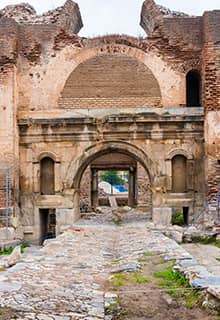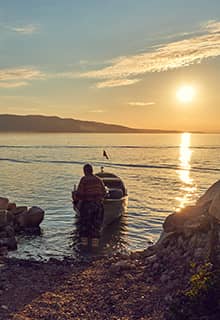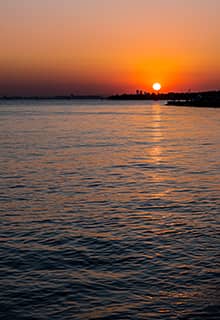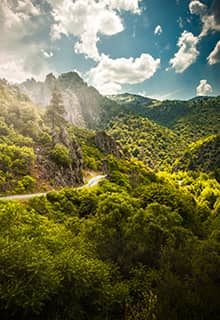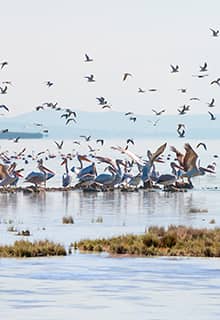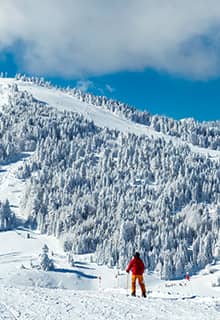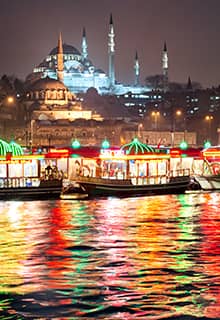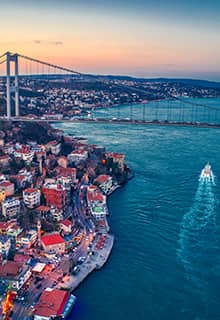

touch
Marmara Türkiye
The Hagia Sophia Grand Mosque in İstanbul
Located on the historical peninsula of İstanbul, The Hagia Sophia Grand Mosque building was originally a church and was constructed by architects Isidore of Miletus and Anthemius of Tralles under the Byzantine Emperor Justinian and it was opened in 567 for prayer. Hagia Sophia was the largest Church of the Byzantine Empire and is one of those rare historic monuments of its time that still stands today. The church was converted to a mosque in 1453 after Sultan Mehmet the Conqueror took the city. Transformed into a museum in 1935 by Mustafa Kemal Atatürk, the founder of the modern Turkish Republic, The Haiga Sophia has recently been re-designated as a Mosque again (2020).
In 1985, Hagia Sophia was added to the UNESCO World Heritage List.
Hagia Sophia And Roman Theatre Of İznik (Ancient Nicaea) in Bursa
İznik (ancient Nicaea) is a beautiful town of Bursa worth seeing for its lake, natural and historical attractions. At one time it was considered as a holy city throughout Christendom, only Jerusalem and the Vatican City were more important. The 1st and 7th Ecumenical Councils dated to 325 and 787 were gathered in Iznik/Nicaea. Iznik is one of the 8 pilgrimage centers in our country, which is considered sacred by the Christian religion.
In İznik, you can visit Hagia Sophia and the Roman Theatre and it is renowned for its ceramic workshops and pottery shops. Sunbathing and swimming off the beaches on the banks of the İznik Lake and eating the local fish caught from the lake are highly recommended. İznik is in the UNESCO World Heritage Tentative List.
Aynali Bazaar in Çanakkale
Aynalı Bazaar’s name is also mentioned in folk songs. It is located on the Çarşı Street in the center of Çanakkale and is one of the important symbols of the city. The bazaar, which is thought to have been built or repaired by Ilya Halyo, one of the prominent Jewish families of Çanakkale, was damaged during the Çanakkale War and was reopened after various repairs.
In the past, there were shops in the bazaar, which made harnesses and ornaments for horses. It is believed that the name "Aynalı (with Mirrors) Bazaar" is used as a kind of analogy because the "horse glasses" called "Ayna (Mirror)" were being sold in the bazaar. In this case, the large size mirrors placed at the entrance of the present bazaar have nothing to do with the original structure of the bazaar.
Justinianus Bridge in Sakarya
Justinianus Bridge, located on Çark River (Melas Stream), which drains the waters of Sapanca Lake into Sakarya River, is one of the magnificent monumental structures in Anatolia of the Early Byzantine Period. Built by Justinianus (527-565), this stone bridge is 365 meters long, 9.85 meters wide and has a total of 12 arches. Previously called "pons" (bridge) in Latin, the bridge did not have a specific name. Later, people who did not know that "pons" means "bridge" in Latin perceived this word as a proper name and called the bridge as Pontogephyra meaning "Bridge of Pons". Later, this name turned into Pentegephyra (Five Bridges), but the bridge is neither five-piece nor five-arched in one form or another. Justinianus Bridge was included in the UNESCO Tentative List of World Heritage in 2018.
Osman Hamdi Bey House and Museum in Kocaeli
Osman Hamdi Bey Museum is located in Gebze district of Kocaeli. It was built in 1884 by the Turkish painter Osman Hamdi Bey. Osman Hamdi Bey's works, family photographs, and personal belongings are exhibited in the museum.
The Walking Mansion in Yalova
The mansion was built by Atatürk, the founder of the Turkish Republic, in 1929. According to the story, one day Atatürk saw a gardener trying to cut the branches of the plane tree adjacent to the mansion when he came to the farm. The gardener told him that the branches were too long and pushed against the walls of the mansion. After hearing this, Atatürk orders: "Don’t cut the tree, shift the building."
A group consisting of İstanbul Municipality teams and technical staff first dug the ground and reached the foundation, then put the mansion on rails that were brought from İstanbul and moved it away from the tree by 4.80 meters on Aug.10, 1930. Thus, the great plane tree evaded being cut down.
The Historical Monuments and Museums in Balıkesir
The mid-14th century Yıldırım Mosque, built by Bayezit I, is the city's oldest mosque while the Zağnos Paşa Mosque, built by and named after the Grand Vizier of Mehmet the Conqueror Zağnos Paşa in 1461, was once part of a great complex. Today only the mosque and baths remain. Saat Kulesi (Clock Tower) built by Mehmet Paşa in 1827 is a smaller version of the Galata Tower. The Karesi Bey Mausoleum of 1336 contains the cenotaphs of Karesi Bey and his five sons. Don’t forget to visit the artefacts that are taken from the area and put-on display in the newly completed Balıkesir Museum (Kuva-i Milliye).
Bazaars in Edirne
Also called as “Kavaflar Bazaar”, Arasta Bazaar is known that in the prayer dome, those who own a shop here swear and pray to do the right thing every morning. It is the right address for those who want to shop in an atmosphere where time stands still.
Another one, Bedesten Bazaar was built in 1418 as a lead-covered 14-domed structure with an ornamented wall covered with two-colour cut stones. Evliya Çelebi (famous ancient Turkish traveller) writes that the diamonds and jewellery in the bazaar were worth a few Egyptian treasures and that sixtynight guards guarded them. Besides its attractive history and, nowadays it is a nice place to go for shopping.
Sokullu Mehmet Paşa Complex in Kirklareli
It is spread over a wide area at the entrance of the Lüleburgaz district. The complex built for worship, trade and education between 1569-1570. shows the feature of a complex with its mosque, arched shops, inn, bath and medrese. Built by Great Architect Sinan and his team, the complex expands over an area of approximately 40,000 square meters outside the Byzantine walls, most of which were destroyed. On the west side of the complex, a palace was built by Sokullu Mehmet Pasha for the sultan of the period.
Rüstempaşa Mosque and Its Complex in Tekirdağ
The “külliye” (Islamic social complex) consisted of a mosque, medrese, bedesten (covered bazaar), caravanserai, Turkish bath, imaret (poorhouse) and library. Today, the complex’s mosque, hamam, bedesten, medrese and library are still standing. It was built in 1554 by order of Sadrazam (Grand Vizier) Damat Rüstem Paşa and it bears Architect Sinan’s signature. The mosque is made of cut limestone and the single balcony minaret is located on its right. The entrance door made of walnut tree has ivory inlay. The door and window wings are decorated with geometric motifs. The round, 5-column marble fountain in the garden was added under the reign of Abdülmecit.
Imperial Mosques in Bilecik
Orhan Gazi Mosque is the first example of Ottoman period Turkish architectural art in the field of religious architecture and it is thought that it was built in the 14th century. The mosque’s most interesting characteristic is the main minaret built on a rock 30 metres away from the edifice.
Kasım Pasha Mosque is located in Söğüt district. It is one of the classic Ottoman mosques and one of the apprenticeships works of Architect Sinan. It was built by desire of Kasım Pasha who was one of Suleiman the Magnificent’s commanders. The building is very interesting thanks to its stone walls, its windows with wooden swings and its mihrab, as well as its woodwork and ivory embroidery. Its pulpit is covered with white marble tiles of various colours.

